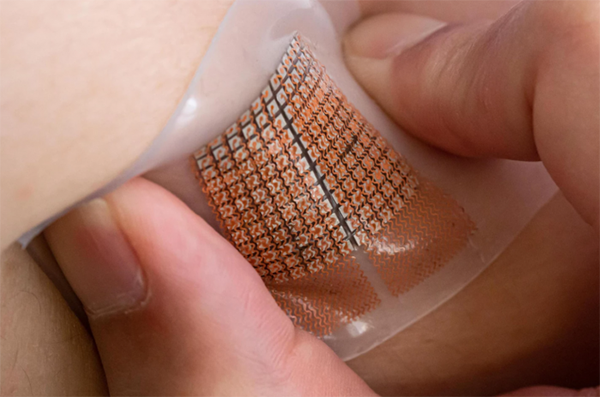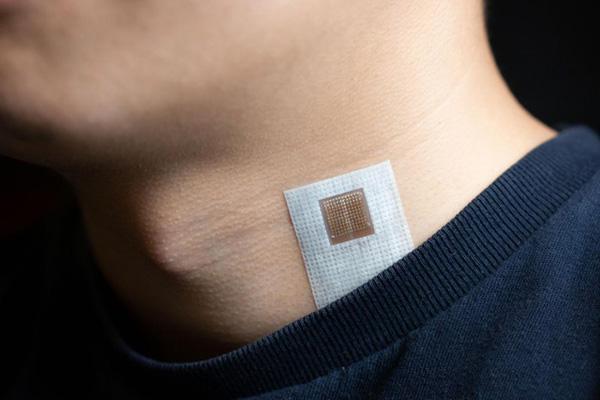According to the foreign media New Atlas, there is no doubt that the sooner you warn about an impending heart attack or stroke, the better. A new skin patch can provide this warning by sending ultrasonic pulses to the wearer's body.

The patch was created by a team led by Professor Xu Sheng at the University of California, San Diego, based on previously developed equipment. The patch needs to be worn on the neck or chest. It consists of a soft, stretchable polymer sheet with a 12กม12 grid inside and a millimeter-sized ultrasonic sensor. Currently, the patch is hard-wired to the computer and power supply, but it is planned to eventually turn it into an independent wireless device.
In one mode of operation, all transducers can be set to emit ultrasonic pulses simultaneously. This produces an ultrasound beam that is directly focused on an area of the body, up to 14 cm (5.5 inches) under the skin.
In another mode, the transducers transmit their waves asynchronously with each other, but still fast enough to form a condensed beam. However, in this case, the beam can be directed from different angles instead of just directly down from the patch. This means that different areas can be scanned without having to place patches directly above each area.

In both cases, the ultrasound beam passes through body tissue and enters a major blood vessel. The beam then echoes on the red blood cells passing through the blood vessel and returns to the patch. By analyzing how the frequency of the echo is affected by the speed of blood cell flow, it is possible to continuously monitor the wearer's blood flow, blood pressure and heart function-all in real time. This information, in turn, can be used to determine whether cardiovascular problems have started to occur.
In the test, the patch proved to be equivalent to the performance of a traditional handheld ultrasound probe. However, this probe must be operated by a well-trained technician in the clinic, and the results may vary depending on the skills of individual users-it is said that this patch is not the case.
"Just stick it on the skin and read the signal," said Zhou Sai, a PhD student who is a co-author of the research paper. "It does not rely on the operator, and does not constitute additional work or burden on technicians, clinicians or patients. In the future, patients can wear such things for point-of-care or continuous home monitoring."